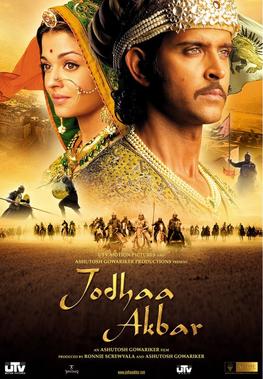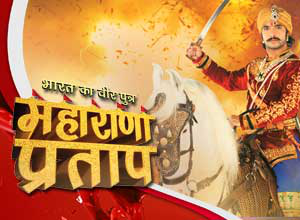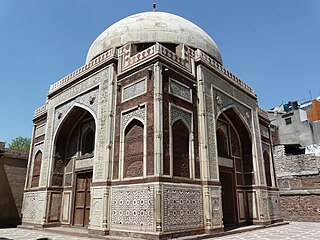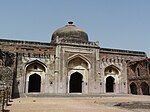
Panipat is a historic city, located in Haryana, India. It is 95 km north of Delhi and 169 km south of Chandigarh on NH-1. The three major battles fought in 1526, 1556 and 1761 took place near the city. The city is famous in India as the "City of Weavers" and "Textile City". It is also known as the "cast-off capital" due to being "the global centre for recycling textiles". Panipat is also home to a variety of manufacturing industries including wool and cotton milling, saltpetre refining, and the manufacture of glass, electrical appliances, and other products. Panipat is included in the list of Critically Polluted Industrial Areas in India. The Comprehensive Environment Pollution Index (CEPI) of the city is 71.91 as against 88.50 of Ankaleshwar (Gujarat). The fatal field of Panipat is the site of three battles that changed the course of India's history, resulting in the creation and confirmation of the Mughal Empire. The third battle led to the decisive defeat of the Maratha Confederacy in North India, which became a dominating power in Delhi by then and paved the way for the British colonial rule of India.

Muhammad Bairam Khan, commonly known as Bairam Khan or Bayram Khan was an important military commander, and later commander-in-chief of the Mughal army, a powerful statesman and regent at the court of the Mughal Emperors, Humayun and Akbar. He was also the guardian, chief mentor, adviser, teacher and the most trusted ally of Akbar. Akbar honoured him as Khan-i-Khanan, which means "King of Kings". Bairam was originally called Bairam "Beg", but later became honoured as Khan. Bairam Khan was an aggressive general who was determined to restore Mughal authority in India.
Mulla Do-Piyaza (1527-1620) was the Advisor and Vizier of the Mughal emperor Akbar. Mulla Do-Piyaza, also portrayed as witty, was Birbal's rival. Even though these folk tales originated at the end of Akbar's reign (1556–1605), Mulla Do-Piyaza began to appear much later. Most scholars consider him to be completely fictional. Scholars believe him to be the son of loyal commander of Mughals Bairam khan, who was assassinated by Adham khan son of Maham Anga while on his way to Hajj. Later Mulla was adopted by Akbar as his courtier and even given dignity in Mughal court.

Adham Khan was a general of Akbar. He was the younger son of Maham Anga, and thus, was the foster brother of Akbar. In his fourth regnal year, Akbar married him to Javeda Begum, the daughter of Baqi Khan Baqlani.

Adham Khan's Tomb is the 16th-century tomb of Adham Khan, a general of the Mughal Emperor Akbar. He was the younger son of Maham Anga, Akbar's wet nurse thus also his foster brother. However, when Adham Khan murdered Akbar’s favourite general Ataga Khan in May 1562, Akbar immediately ordered his execution by defenestration from the ramparts of the Agra Fort.

Jodhaa Akbar is a 2008 Indian Hindi-language epic historical romantic drama musical film directed by Ashutosh Gowariker. It stars Hrithik Roshan and Aishwarya Rai Bachchan in the titular roles. Set in the 16th century, the film shows the life and love between the Muslim Emperor Akbar of Mughal Empire and a Hindu Princess Jodhaa Bai of Amber, and their political marriage. A. R. Rahman composed the musical score which proved to be critically and commercially successful. The film marks the second collaboration between Roshan and Rai Bachchan after Dhoom 2 (2006).

Amiral Kabir Sayyid Mahmud Khan Barha, also known as Mahmud Khan and mahmud dewaan, was a general in the Akbar's army, son of Sayyid Mubarak, was the first person of this family - the Sayyids of Barah - to rise to the rank of a nobleman. This he did through his bravery and valour during the Timurid dynasty. He joined the service of Bairam Khan.

The Enchantress of Florence is the ninth novel by Salman Rushdie, published in 2008. According to Rushdie this is his "most researched book" which required "years and years of reading".
Shams ud-Din Ataga Khan was a prominent figure in the court of the Mughal emperor Akbar.

Abu'l-Fath Jalal-ud-din Muhammad Akbar, popularly known as Akbar the Great, and also as Akbar I, was the third Mughal emperor, who reigned from 1556 to 1605. Akbar succeeded his father, Humayun, under a regent, Bairam Khan, who helped the young emperor expand and consolidate Mughal domains in the Indian subcontinent. He was considered one of the greatest emperors of India in Indian history.

Ashwini Kalsekar is an Indian actress who works predominantly in the Marathi and Hindi television and film industry.

Hamida Banu Begum was the empress consort of the second Mughal emperor Humayun and the mother of his successor, the third Mughal emperor Akbar. She was bestowed the title of Mariam Makani, by her son, Akbar. She also bore the title of Padshah Begum during the reign of Akbar.

Salima Sultan Begum was the third wife and chief consort of the Mughal emperor Akbar, and the granddaughter of Babur.

Bharat Ka Veer Putra – Maharana Pratap is an Indian historical fiction series produced by Contiloe Entertainment. It is based on the life of Maharana Pratap, a sixteenth century ruler of Mewar kingdom. It starred Sharad Malhotra, Rachana Parulkar, Faisal Khan and Roshni Walia.

Jodha Akbar is an Indian Historical drama television series that aired from 18 June 2013 to 7 August 2015 on Zee TV, also digitally available on ZEE5. The show was produced by Ekta Kapoor under Balaji Telefilms. Starring Rajat Tokas and Paridhi Sharma, critics have praised the series for its acting performances, scope, soundtrack and production values. It replaced Rab Se Sohna Isshq and was replaced by Tashan-e-Ishq in its timeslot.

Mirza Aziz Koka, also known as Kokaltash and by his sobriquet Khan-i-Azam, was the foster brother of Akbar, who remained one of the leading nobles at the courts of the Mughal emperors Akbar and Jahangir. He was also the Subahdar, governor of the Subah (province) of Gujarat.

Khairul Manazil or Khair-ul-Manazil is a historical masjid and madrasa built in 1561 in New Delhi, India. The masjid is situated in the opposite of Purana Qila on Mathura Road, south east to Sher Shah Gate. The gateway of the masjid was made by red sandstone following Mughal architecture, but the inside structure of the building was made in Delhi Sultanate pattern.

The Mughal conquest of Malwa was a military campaign launched by the Mughal Empire in 1560 during the reign of Akbar against the Sultanate of Malwa, which had broken free from Mughal rule during the rebellion of Sher Shah Suri from the emperor Humayun. Thus, Akbar had a claim to the province. Baz Bahadur had been the governor of Malwa in the Sur Empire but broke away after the death of Sher Shah.

Maulana Pir Muhammad Khan Shirwani was a senior official of the Mughal Empire and a commander in the Mughal Army.

The Tomb of Ataga Khan is a 16th-century mausoleum located in the outer limits of the Nizamuddin Dargah complex in Delhi, India. Built during the reign of Mughal Emperor Akbar, it was dedicated to Ataga Khan, an important noble of Akbar's court.




















